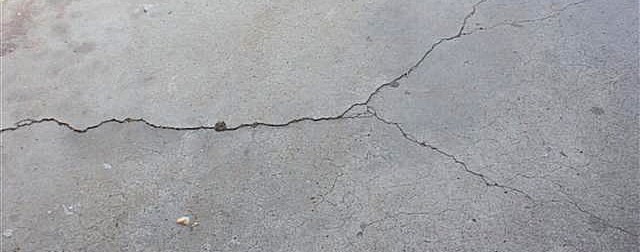Concrete is the result of mixing cement, water and aggregates (fine and coarse). Cement reacts with water and constitutes the paste (glue) which covers and binds the aggregates. One of the properties of concrete that of particular interest is the shrinkage “shrinkage strain to the structural engineer”.
Concrete shrinkage is defined as a reduction in volume through time, and is mainly due to water movement within a concrete’s porous structure and to chemical reactions. The emptying of pores due to water movement generates tensile stresses that pull the cement paste closer causing shrinkage, while chemical reactions generate products whose volume is less than the volume of the initial ingredients.
Shrinkage can be divided into two phases:
- Early age shrinkage, which occurs in the first 24 hours and;
- Long term shrinkage, which occurs after 24 hours.
In general, for a concrete mixture with water-to-cement ratio greater than 0.42, the early age shrinkage is primarily due to the chemical hydration reactions, while the long term shrinkage is attributed to water exchange and evaporation.
Factors Affecting Shrinkage Strain
The value of shrinkage strain depends highly on the properties of concrete mixture:
- Shrinkage happens due to the volume change of the paste. On contrary, the coarse aggregates resist it. Thus, concrete mixes with a higher content of coarse aggregates would have lower shrinkage strain as long as aggregates possess high modulus of elasticity and rough surfaces.
- Supplementary Cementitious Materials (SCMs) such as silica fume, fly ash and ground granulated blast furnace slag, influence shrinkage strain because their addition refines the pore structure of the cement paste, thus resulting in a stiffer and stronger material. [Note: the result of pore refinement is an increase in capillary tension and hence more autogenous shrinkage. Moreover, increasing the amount of SCMs is found to augment shrinkage, both autogenous and drying, because the specific gravity of these materials is less than that of ordinary portland cement.]
- Concrete mixtures having higher water-to-cement ratio would be more porous and accordingly would have higher drying shrinkage and lower autogenous shrinkage.
Damage due to Shrinkage
At early age of concrete, shrinkage strains and the resulting stresses might lead to the initiation and propagation of cracks, which facilitates the entry of water and other detrimental substances into concrete and subsequently, compromising the durability of concrete.
Regarding the structural aspect, both the early and long term shrinkage can lead to undesirable results such as residual stresses, loss of prestress forces, and a reduction in the moment of inertia, which in turn affects serviceability and deflection.
Shrinkage does not affect the concrete members if they were free to shrink. However, concrete elements are always restrained either by other structural elements or supports. This restriction generates tensile stresses on concrete that cause cracks when their magnitude exceeds the concrete tensile strength.
